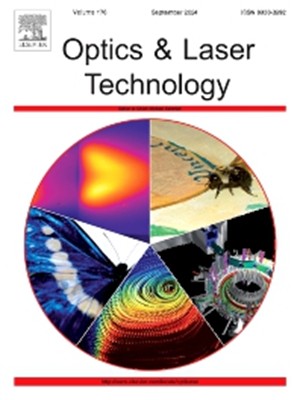Adaptive DoFP polarization image demosaicking based on local gradient and channel correlation
IF 4.6
2区 物理与天体物理
Q1 OPTICS
引用次数: 0
Abstract
With the advancement of nanotechnology, division-of-focal-plane (DoFP) polarization imaging systems with real-time imaging capabilities have emerged as a significant research area, advancing the application potential of miniaturized polarization imaging systems. Nonetheless, the superpixel structures within these systems can introduce instantaneous field-of-view (IFoV) errors, which affect the quality of polarization image reconstruction and the accuracy of polarization information calculations. Most existing polarization image demosaicking methods based on channel correlation assume uniform scene distribution, utilizing fixed weights or thresholds. This reliance produces poor robustness across various scenes, making these methods less suitable for practical applications. To address these limitations, this paper proposes an adaptive DoFP polarization image demosaicking method based on local gradient and channel correlation (ALGPCC). Specifically, the method first employs local gradient optimization on the traditional bilinear interpolation method to produce a high-quality initial demosaicked image. Next, it combines normalized cross-correlation with guided filtering to create adaptive polarization channel correlation weights, allowing for dynamic adjustment based on the polarization characteristics of various scenes. Finally, these adaptive weights are applied to a polarization channel difference model, further improving the demosaicking results and effectively reducing IFoV errors. Experimental results with synthetic and real DoFP polarization images demonstrate that the proposed method significantly surpasses existing demosaicking methods in objective metrics and visual quality, showing superior performance across various scenes and offering notable advantages in processing speed.
求助全文
约1分钟内获得全文
求助全文
来源期刊
CiteScore
8.50
自引率
10.00%
发文量
1060
审稿时长
3.4 months
期刊介绍:
Optics & Laser Technology aims to provide a vehicle for the publication of a broad range of high quality research and review papers in those fields of scientific and engineering research appertaining to the development and application of the technology of optics and lasers. Papers describing original work in these areas are submitted to rigorous refereeing prior to acceptance for publication.
The scope of Optics & Laser Technology encompasses, but is not restricted to, the following areas:
•development in all types of lasers
•developments in optoelectronic devices and photonics
•developments in new photonics and optical concepts
•developments in conventional optics, optical instruments and components
•techniques of optical metrology, including interferometry and optical fibre sensors
•LIDAR and other non-contact optical measurement techniques, including optical methods in heat and fluid flow
•applications of lasers to materials processing, optical NDT display (including holography) and optical communication
•research and development in the field of laser safety including studies of hazards resulting from the applications of lasers (laser safety, hazards of laser fume)
•developments in optical computing and optical information processing
•developments in new optical materials
•developments in new optical characterization methods and techniques
•developments in quantum optics
•developments in light assisted micro and nanofabrication methods and techniques
•developments in nanophotonics and biophotonics
•developments in imaging processing and systems

 求助内容:
求助内容: 应助结果提醒方式:
应助结果提醒方式:


